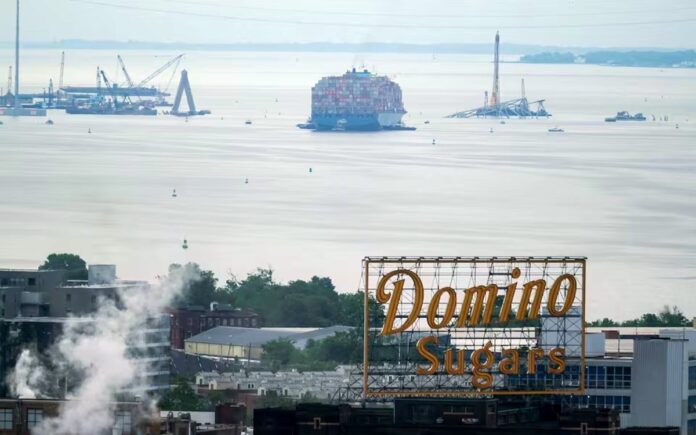Baltimore: Recovery teams achieved a significant milestone early on Monday by refloating and towing a massive cargo vessel that had obstructed shipping in the Port of Baltimore for two months, following its collision with the Francis Scott Key bridge, which led to the bridge’s collapse.
Tugboats commenced the operation to relocate the Dali to a local marine terminal after successfully making the container ship buoyant around 6:40 a.m. EDT (1040 GMT), as announced by the U.S. Army Corps of Engineers on the social media platform X.
The extraction of the Dali signifies a crucial advancement in the Port of Baltimore’s recovery process from the aftermath of the vessel’s collision with one of the bridge’s support pillars on March 26. The collapse of the bridge resulted in the tragic loss of six road workers and disrupted traffic flow through the nation’s busiest port for car shipments.
Maryland Governor Wes Moore, in an interview with NBC on Sunday, expressed confidence that workers were on schedule to completely clear the channel by the end of this month, thereby restoring full access to the port. In the interim period following the bridge collapse, authorities had established four temporary channels to facilitate partial shipping operations.
Also Read | OpenAI Executive Resigns, Citing Safety Concerns and Shift in Company Priorities
Last week, crews executed controlled explosions to facilitate the removal of a section of the collapsed bridge lodged in the bow of the Dali, which had immobilized the vessel. This strategic move enabled salvage crews to utilize cranes and barges to extract the twisted metal wreckage, subsequently freeing the ship for refloating and removal, as confirmed by the Corps of Engineers.
In a preliminary report released last week, federal investigators disclosed that the Dali had experienced multiple instances of electrical power failure prior to the collision with the bridge while departing from the port.
Maryland state officials have estimated a reconstruction cost ranging from $1.7 billion to $1.9 billion for the bridge and anticipate its completion by the fall of 2028.



